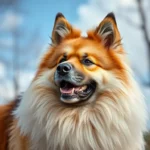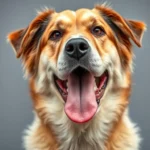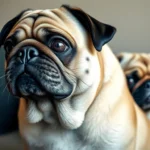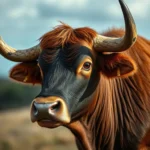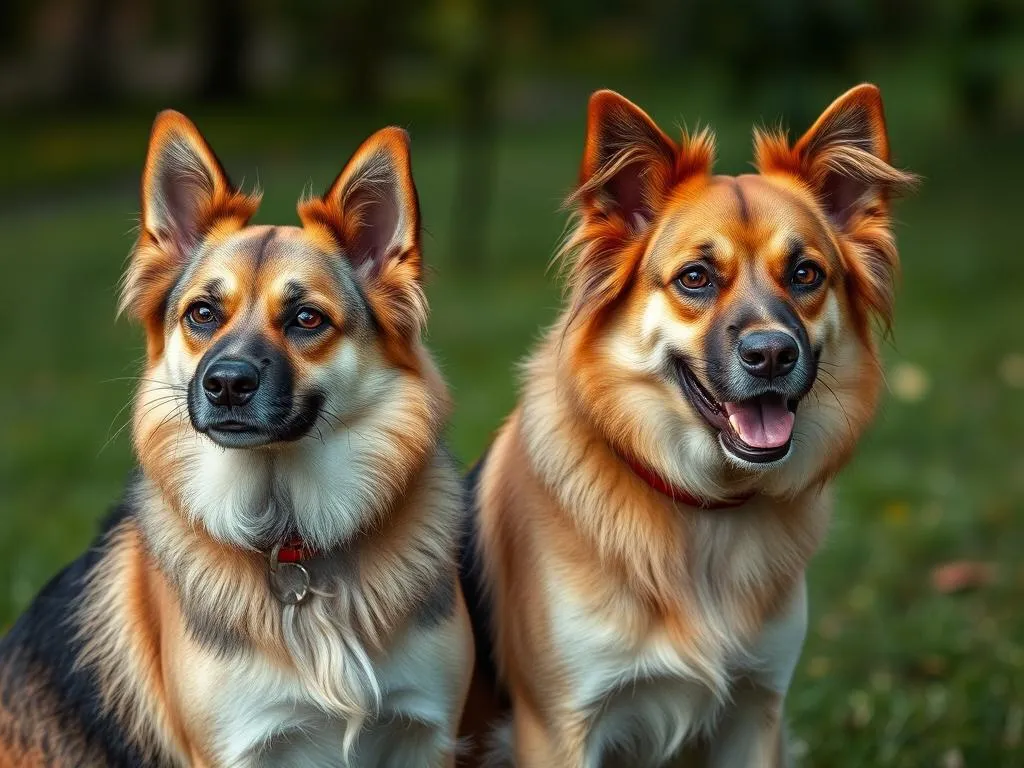
Introduction
Dogs hold a significant place in Vietnamese culture, symbolizing loyalty, companionship, and protection. They are not only beloved pets but also play essential roles in various aspects of life, from guarding homes to participating in traditional festivals. Vietnamese dog breeds, unique to the region, contribute to this cultural fabric, showcasing the diversity and adaptability of canines in Vietnam’s varied landscapes.
This article aims to educate readers about the various Vietnamese dog breeds, their characteristics, history, and significance in both rural and urban settings. Understanding local dog breeds is crucial for potential adopters and dog enthusiasts, as it helps in making informed decisions about pet ownership and breed selection.
Overview of Vietnamese Dog Breeds
Definition of Dog Breeds
A dog breed is defined by a specific set of inherited characteristics that distinguish one type of dog from another. These characteristics include physical traits like size, coat type, and color, as well as behavioral tendencies such as temperament and intelligence. The importance of breed characteristics cannot be overstated, as they influence compatibility with potential owners and living environments.
Historical Context
Dogs have been companions to humans in Vietnam for centuries, with archaeological evidence suggesting their presence since ancient times. Historically, dogs were used for hunting, guarding livestock, and even as a food source in some regions. Their role in Vietnamese society has evolved, but they continue to be valued for their companionship and loyalty, making Vietnamese dog breeds an integral part of the culture.
Popular Vietnamese Dog Breeds
Phu Quoc Ridgeback
The Phu Quoc Ridgeback is one of the most notable Vietnamese dog breeds. This breed is medium to large-sized, known for its distinctive ridge of hair along its back that grows in the opposite direction to the rest of its coat. The Phu Quoc Ridgeback is often characterized by its short, dense coat, which can be black, yellow, or brown.
Historically, this breed has roots on Phu Quoc Island, where it was bred for hunting and guarding. Its unique ridge is a result of natural selection, advantageous for survival in the wild. The Phu Quoc Ridgeback is intelligent, loyal, and protective, making it an excellent companion for families and individuals alike.
Dingo Vietnam
The Dingo Vietnam is another fascinating breed, resembling its wild ancestors. This breed is medium-sized, with a lean body and a short coat that is typically tan or reddish in color. The Dingo Vietnam is known for its agility and keen senses, making it an excellent hunter.
This breed exhibits a strong prey drive and is highly adaptable to the Vietnamese environment. The Dingo Vietnam is generally wary of strangers, showcasing a protective nature that makes it a good watchdog. Its temperament is independent and intelligent, requiring consistent training and socialization.
Tamaskan Dog
The Tamaskan Dog is a relatively newer breed in Vietnam, developed to resemble wolves. This breed is large and muscular, with a thick double coat that can come in various colors, including gray, black, and red. The Tamaskan Dog is known for its friendly and playful temperament, making it a great family pet.
In Vietnam, the Tamaskan Dog is often used for various working roles, including search and rescue and as therapy dogs due to their intelligence and trainability. Breeding practices for this breed focus on maintaining its wolf-like appearance while ensuring a stable and friendly temperament.
Hmong Cao
The Hmong Cao, a breed native to the Hmong people of northern Vietnam, is medium to large-sized with a distinct appearance. They have a thick coat that can vary in color, often displaying a mix of black, brown, and white. The Hmong Cao is known for its loyalty and protective instincts, making it an excellent guardian for homes and livestock.
Culturally, the Hmong Cao holds significant value among the Hmong community, often seen as a symbol of status and fidelity. This breed is also known for its hunting abilities, particularly in mountainous terrains, setting it apart from other breeds with similar traits.
Other Notable Breeds
In addition to the more well-known Vietnamese dog breeds, there are several lesser-known varieties worth mentioning:
- Bac Ha: A medium-sized dog with a thick coat, known for its agility and adaptability to harsh climates.
- Lai Sind: A hybrid breed resulting from crossbreeding between local dogs and foreign breeds, recognized for its unique characteristics and versatility.
Each of these breeds possesses distinct traits and histories that enrich the tapestry of Vietnam’s canine heritage.
Care and Management of Vietnamese Dog Breeds
General Care Requirements
Caring for Vietnamese dog breeds requires an understanding of their specific needs. Nutritional needs may vary greatly between breeds, but a balanced diet consisting of high-quality dog food, appropriate for their size and age, is essential. Regular feeding schedules and portion control help maintain a healthy weight.
Exercise and mental stimulation are also crucial. Most Vietnamese dog breeds are active and require daily exercise—long walks, playtime, and engaging activities can prevent boredom and promote overall well-being.
Grooming Needs
Grooming practices differ among breeds. Most Vietnamese dog breeds have short, dense coats that require regular brushing to reduce shedding and maintain coat health. Bathing should be done as needed, but over-bathing can strip natural oils, leading to skin issues.
It’s also essential to check their ears, teeth, and nails regularly. Dogs with long ears may be prone to infections, while regular dental care helps prevent oral diseases.
Health Considerations
Like all breeds, Vietnamese dog breeds can be susceptible to specific health issues. Common concerns may include hip dysplasia, skin allergies, and parasitic infections. Regular veterinary check-ups, vaccinations, and preventative care, including flea and tick treatments, are essential to ensure a long and healthy life for these dogs.
Adoption and Breeding Practices
Ethical Considerations
When considering adopting a Vietnamese dog breed, it’s vital to adopt from reputable breeders or shelters. Responsible breeding practices prioritize the health and temperament of the dogs, ensuring they are well-socialized and cared for. Adopting from shelters helps provide homes for dogs in need and supports the local community.
Understanding the implications of breeding practices is crucial. Irresponsible breeding can lead to inherited health issues and behavioral problems, affecting the dog’s quality of life and the owner’s experience.
Finding a Vietnamese Dog Breed
For those interested in finding a Vietnamese dog breed, various resources are available. Local shelters and rescue groups often have breeds native to Vietnam, while reputable breeders can offer purebred options. It’s essential to research and visit shelters or breeders to assess the environment and ensure they practice ethical breeding.
When selecting a breed, consider your lifestyle, living situation, and activity level. Each breed has unique characteristics and needs, so finding one that aligns with your lifestyle will lead to a happier and healthier companionship.
Cultural Significance of Dogs in Vietnam
Dogs in Vietnamese Folklore and Mythology
Dogs play a symbolic role in Vietnamese folklore and mythology. They are often depicted as loyal companions, guardians, and symbols of prosperity. Various stories highlight the bravery of dogs, showcasing their role in protecting families and communities. In many traditions, dogs are celebrated during festivals, reflecting their importance in daily life and spiritual beliefs.
Dogs in Modern Vietnamese Society
The perception of dog ownership in Vietnam has evolved significantly in recent years. While dogs were traditionally viewed as working animals, they are increasingly recognized as beloved pets. Urbanization has led to changing attitudes, with many families embracing dogs as companions rather than solely as guard animals.
In rural areas, dogs continue to play crucial roles in agriculture and protection, while in urban settings, dogs are often pampered and treated as family members. This shift illustrates the growing appreciation for the companionship and emotional support that dogs provide.
Conclusion
In summary, Vietnamese dog breeds hold a significant place in the cultural and social fabric of Vietnam. Understanding the unique characteristics, care requirements, and historical significance of these breeds is essential for potential adopters and dog enthusiasts alike. By considering adopting a breed native to Vietnam, individuals can foster a deeper connection with the culture and help preserve these remarkable dogs for future generations.
The relationship between dogs and humans in Vietnam is one of mutual respect and companionship. As we continue to embrace the joys of dog ownership, it’s important to remember the responsibilities that come with it, ensuring that our furry friends receive the love and care they deserve.
